There are few behavior problems more embarrassing or more ubiquitous than dog jumping on strangers.
While jumping on strangers isn’t as dangerous as aggression or heartbreaking as separation anxiety, it’s still a behavior issue that should be fixed!
The good news is that dogs that jump on strangers aren’t generally suffering from a behavior issue like anxiety or aggression – jumping up is just a (slightly more simple) training problem.
There are always exceptions, but this is generally a simple behavior problem to fix – and we’ll show you how!
Why Does My Dog Jump on Strangers?
Dogs jump on strangers for a variety of reasons. If we could ask your dog, he might point to several of these reasons for his behavior:
- When your dog was a puppy, it was cute. We all are guilty of letting cute puppies crawl all over us, letting them lick our ears and sit on our chests. This gets less cute when your dog gets bigger, but by then your dog thinks that it’s OK!
- Some strangers don’t mind, making the habit hard to kick. Many well-meaning strangers try to reassure embarrassed dog owners that it’s ok if their dog jumps. These strangers love dogs, after all. But these kind-hearted dog-loving guests make it much harder to teach your dog not to jump by reinforcing bad behavior!
- You’ve created an accidental behavior chain. Many people accidentally teach their dog to jump, then sit. The underlying advice (reward your dog if he sits) is good! But implementation is often less than perfect, leading your dog to jump first, then sit (then get a treat). Oops!
- Your punishment turned into a game. Reticent to dole out harsh punishments, we often scold our dogs with pushing, pulling, yelling, and squealing. While I certainly don’t advocate harsh punishment, these minor punishments easily turn into games for the dog. I’ve met plenty of rowdy teenage dogs that actually seem to like being kneed in the chest or pushed aside!
- You get excited when you see your dog. It’s so easy to squeal and get excited when you see that wagging tail at the end of the day! But your excitement at greeting your dog might actually be part of the reason she’s jumping all over you. Being calm and collected during canine greetings is likely to get you a better result.
- Licking faces and ears is what dogs do when they’re excited. Have you ever watched a young dog greet an older one when the young one is excited? Both wolf cubs and dog puppies lick excitedly around the mouth and ears of parents and other family members. This actually helps the parents throw up the hunt – ew – but has become a ritualized greeting behavior as well! Since we’re much taller than our dogs, they jump as they try to lick our faces.
To summarize, your dog jumps because it’s a natural behavior with serious genetic components – and then we make it a hard habit to kick by inadvertently encouraging it.
How Do I Stop My Dog From Jumping on Strangers?
Whenever someone asks me how to stop their dog from doing something, my immediate response is a question: “What would you like your dog to do instead?”
I ask this question because it helps us think of something that we can reward our dogs for doing.
If we want to decrease a behavior, we have to punish it. I don’t like using punishment in training because of the potential risks involved, so instead, I like to focus on differential reinforcement of an incompatible behavior.
That’s a fancy way of saying, “Reward something that can’t happen at the same time as the action you want to prevent.”
Differential reinforcement of an incompatible behavior (which we’ll refer to as DRI from now on) is the reason that so many trainers suggest teaching your dog to sit! Your dog can’t jump and sit at the same time.
Unfortunately, it’s really easy to accidentally create a behavior chain of jump-sit (as outlined above). How can we avoid that?
1. Manage the Situation – Implement Jumping Preventive Measures!
You have to stop your dog’s jumping before it starts.
For most over-excited greeters, the excitement that leads to jumping starts when they see a new person. If you let your dog drag you over to “go say hi” to a stranger on the street, you’re already starting out behind because you’re letting your dog’s dragging shape the situation.
Letting your dog’s excitement get the best of him won’t help anyone!
If your dog tends to jump on people in the street, give a wide berth and reward your dog for keeping eye contact and attention on you.
If your dog jumps on guests, put her behind a exercise pen until she calms down. If your dog jumps on you when you get home from work, don’t come inside until she sits.
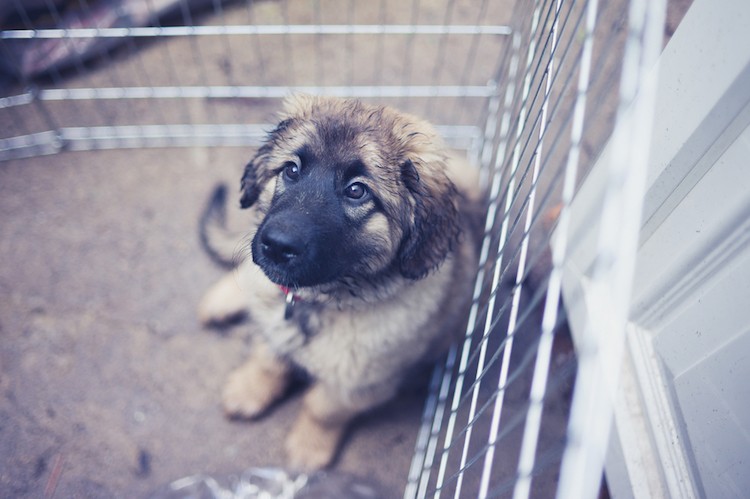
You’ve got to make jumping impossible for your dog first, before trying to train her out of it.
2. Get Help From Strangers (But Not Right Away)
During the early stages of training, it’s best not to let your dog greet unknown strangers at all. You simply can’t rely on strangers to train your dog.
This might be disappointing for strangers if your dog is cute (I’ve been cussed out before when I asked someone not to pet my dog), but it’s necessary.
As your dog is getting better with training, you can instruct strangers from a distance before letting them greet your dog. If your dog is already mid-jump, it’s too late to ask the stranger not to pet her!
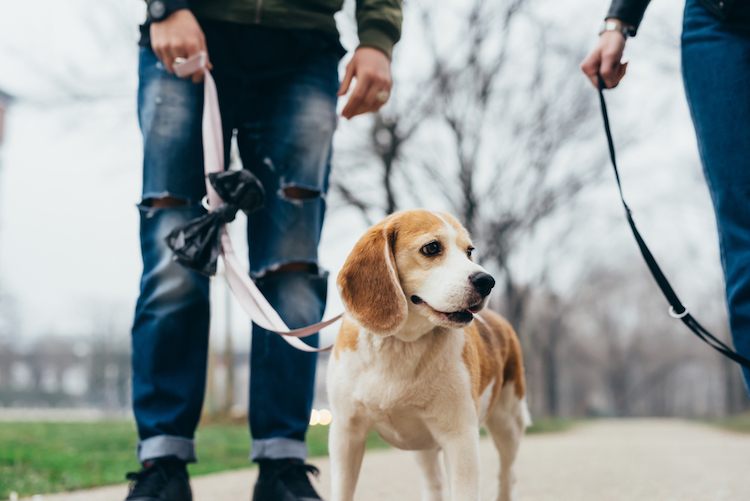
3. Teach the New Response in a Quiet Place
Decide on what you’d like your dog to do instead of jumping.
I generally recommend using the hand target method, where you’ll teach your dog to tap his nose to your hand on command.
Teaching the Hand Target Method
To get started, teach your dog to touch his nose to your hand by putting your hand right in front of his face. When he reaches out to sniff, give a treat.
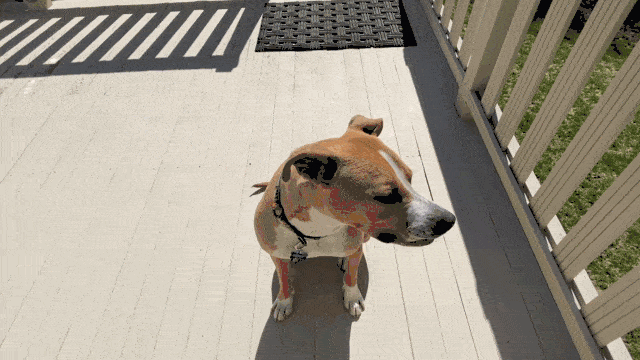
Start building up the distance he’s got to move and practice all over the place. This should be fun! Your dog should come running when you ask him to hand target before you move on.
Don’t try to use your hand targets with greetings until she’s rock-solid elsewhere. Even then, don’t the hand target method while greeting strangers until your dog is a rockstar with you.
Ultimately, you can use the hand targets to get your dog’s attention when you’re passing people on the street. When people come into the house, they can ask your dog to do a few hand targets during the initial excited greeting.
If you put your hands low to the ground and keep the game exciting, this helps keep the dog’s paws on the ground while the initial excitement burns away.
After a few seconds (or longer, for some dogs), you can allow the dog to fully greet the person. The hand targets essentially help get the wiggles out during the crucial first few seconds of a greeting!
Here’s a video for added help showing how the hand targeting method can be taught to your pooch.
Alternative Option: The Stand-and-Wiggle
I also like the stand-and-wiggle option. Here, a dog is allowed to wiggle as much as he wants as long as all four paws are on the ground.
This is a bit harder to teach at first, but can be a better long-term option than sitting. It’s really hard for dogs to stay seated while meeting someone, so standing and wiggling is often a lot easier!
To teach the stand-and-wiggle, tether your dog or put up an exercise pen. When you return from an absence, take a step towards your dog if she’s got all four feet on the floor. If she jumps, take a step back. It’s like a red-light-green-light game!.
4. Add Consequences
Now that your dog is a hand-target pro (or is getting the hang of the stand-and-wiggle option), you can start practicing when you come home every day.
Head off the problem of accidental behavior changes by introducing a bit of negative punishment.
This is the type of punishment where you take something away (hence the negative sign) to punish a behavior.
When a dog jumps up, she wants attention. If your dog jumps up, take a step away, turn your back, or exit the room briefly. You don’t need to say no or otherwise correct your dog. Just quietly, calmly, and swiftly remove your presence from the dog.
Ask your guests and strangers to do the same. This is often really hard for people, so it’s best to do this training with pre-planned greetings rather than expecting strangers on the street to do it right.
5. Take Your Jump-Free Act on the Road
Once your dog is reliably greeting you with four paws on the floor at home, it’s time to up the ante. Only now is it time to take your practice on the road.
You can start letting your dog greet strangers only after your dog is polite with you, your family, your friends, your trainer, and other controlled people.
Give people instructions ahead of time (by calling out from 10+ feet away) and avoid kids, drunk people, and other groups that are unlikely to comply with your requests.
That basic outline will help most dogs stop jumping up on people!
The problem that most people run into is consistency. If your dog gets rewarded by 1 stranger out of every 10, she’s likely to keep jumping. Jumping on strangers becomes the lottery for your pup. She might even try jumping higher, harder, more, or with barking added because maybe she’s just not jumping hard enough to get what she wants!
That’s why controlling your dog’s greetings is so important here!
A Final Trainer’s Tip on Jumping Dogs
In general, I find that a combination of asking your dog to do a well-known behavior and moving away from her if she jumps will work.
My final tip: make things a bit easier for your dog by kneeling down when you come home so she can greet you naturally without jumping up.
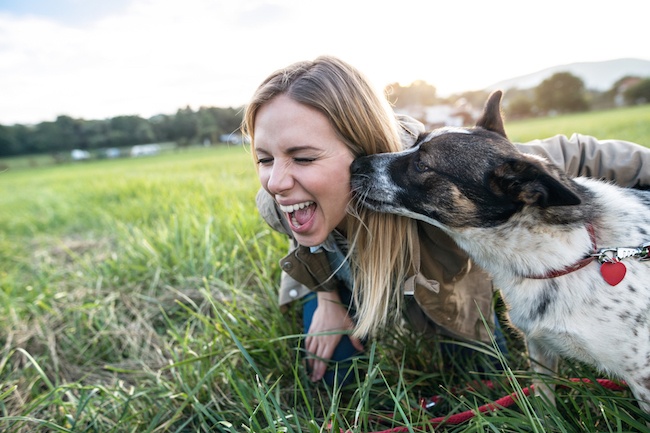
My dog and I have a special ritualized greeting. I love his full-body wags and ear licks, so I don’t actually want those to stop – but I also really don’t want him jumping on strangers, though.
When I get home from work, one of the first things I do is kneel down. I open my arms and let Barley run over, his whole body wagging with joy. He almost always knocks me off-balance as he licks my ears, but I catch myself by rubbing his butt.
We both love this greeting. It lets us both express how excited we are to see each other without him learning to jump on people.
And all I have to do is kneel down! He doesn’t have to jump to lick my ears if I put my ears at tongue height.
This compromise works well for us – you might want to try it!
How did you teach your dog to stop jumping? Are you still struggling after trying these methods? Let us know!
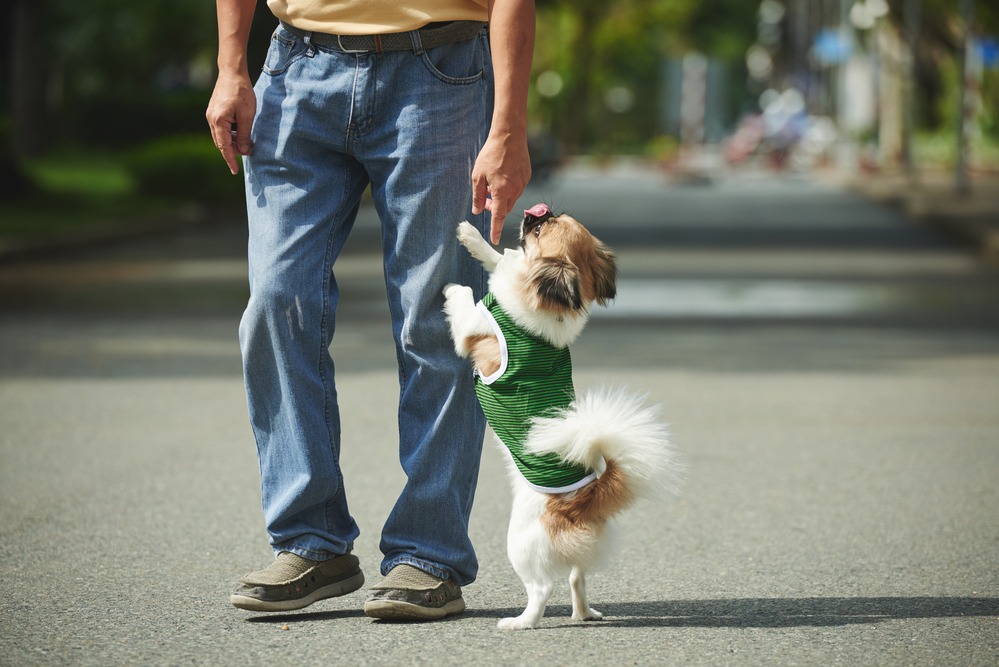



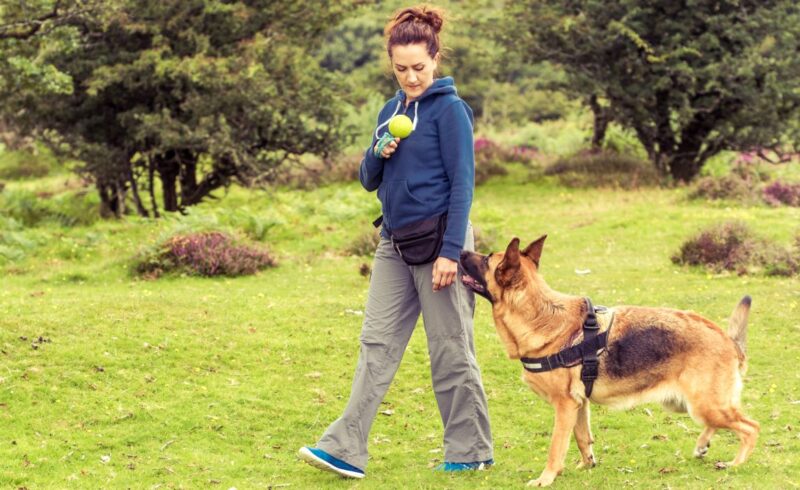
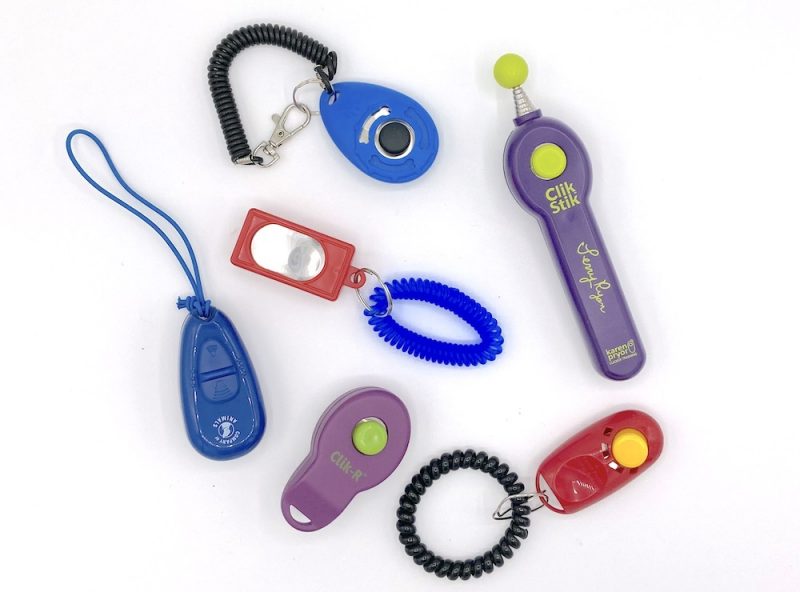

Leave a Reply to Siddhika Cancel reply